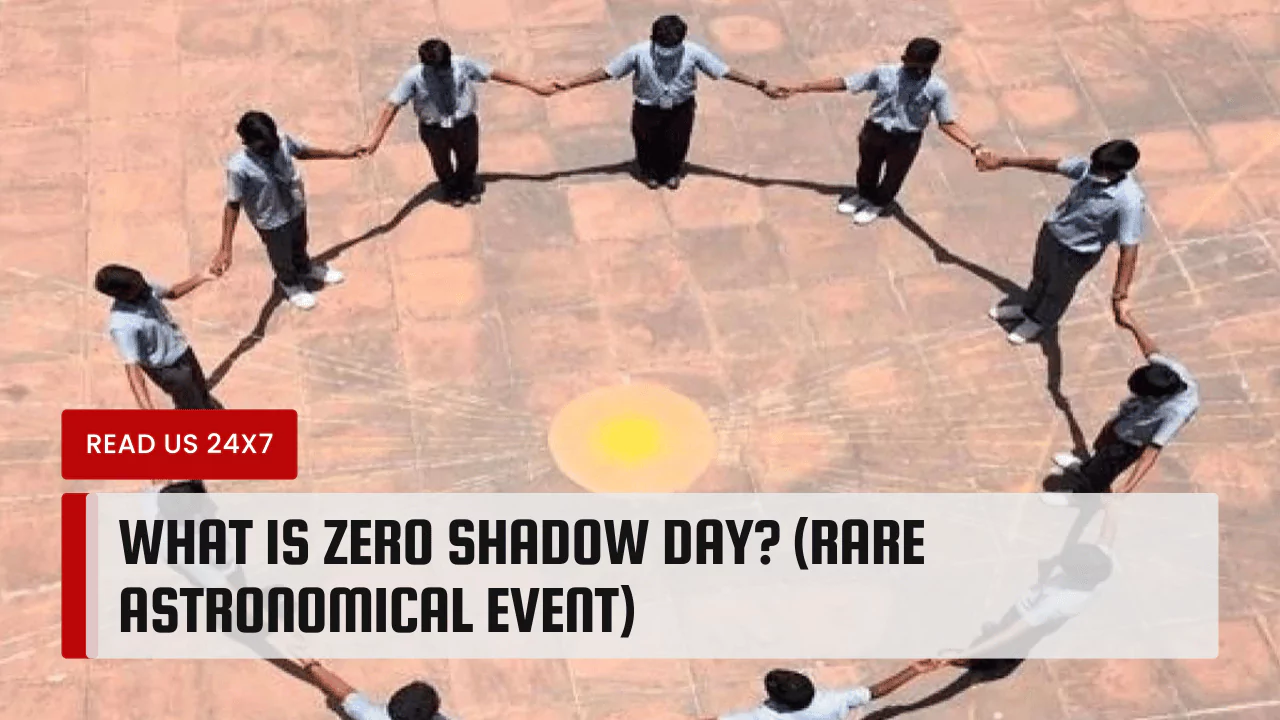Zero Shadow Day is a fascinating astronomical phenomenon that occurs twice a year in specific locations. During this brief window, the sun reaches its highest point directly overhead, causing vertical objects to cast no shadows. It’s a captivating display of the Earth’s tilt and the sun’s apparent movement across the sky.
Understanding Zero Shadow Day
The Astronomical Society of India (ASI POEC) plays a crucial role in raising awareness about Zero Shadow Day. They provide resources and information about the phenomenon, including state-wise maps in India to help people determine when and where to witness it.
In simpler terms, Zero Shadow Day occurs when the sun is positioned exactly overhead at noon. This alignment eliminates the creation of shadows for upright objects on the ground. It’s a significant event because it showcases the precise relationship between the Earth’s tilt and the sun’s path in the sky.
Event Details
Zero Shadow Day doesn’t occur on a fixed date globally. The specific dates and times vary depending on the location’s latitude. It primarily happens in regions between the Tropic of Cancer (23.5 degrees north) and the Tropic of Capricorn (23.5 degrees south). Places within this latitudinal band experience Zero Shadow Day twice a year.
Interestingly, Zero Shadow Day has an alternative name in some regions. For instance, in Hawaii, it’s sometimes referred to as “Lahaina Noon,” named after the town of Lahaina on Maui where the phenomenon is particularly well-observed.
- Kanyakumari: April 10 and September 1 (Local Noon: 12:21, 12:22)
- Bengaluru: April 24 and August 18 (Local Noon: 12:17, 12:25)
- Hyderabad: May 9 and August 5 (Local Noon: 12:12, 12:19)
- Mumbai: May 15 and June 27 (Local Noon: 12:34, 12:45)
- Bhopal: June 13 and June 28 (Local Noon: 12:20, 12:23)
The Phenomenon Behind Zero Shadow Day
The key to understanding Zero Shadow Day lies in the Earth’s tilt. Our planet isn’t perfectly upright on its axis; it’s tilted at an angle of 23.5 degrees. This tilt is responsible for the seasons. As the Earth orbits the sun throughout the year, the sun’s apparent position in the sky changes.
During Zero Shadow Day, the tilt of the Earth and the sun’s position align perfectly. In locations between the Tropic of Cancer and Capricorn, the sun reaches its zenith (highest point) at noon, casting light directly down on the ground, eliminating shadows for vertical objects for a short period.
The duration of Zero Shadow Day can range from a few minutes to about twenty minutes, depending on the observer’s latitude and the specific time of the event. It’s a fleeting yet remarkable display of our planet’s celestial dance with the sun.
Beyond the visual spectacle, Zero Shadow Day holds historical significance. Ancient civilizations, particularly those near the equator, used the phenomenon to create sundials and calendars. By observing the disappearance of shadows, they could accurately determine the time of day and track the changing seasons. This knowledge was crucial for agricultural practices and religious ceremonies.
In the modern world, Zero Shadow Day still holds some practical applications. Scientists can use it to calibrate astronomical instruments and measure the Earth’s tilt with greater precision. Additionally, the phenomenon can be a valuable educational tool, helping students visualize the Earth’s rotation and revolution around the sun.
While the window to witness Zero Shadow Day might be brief, it serves as a captivating reminder of the intricate dance between our planet and the sun. It’s a testament to the delicate balance that governs our solar system and the fascinating interplay of celestial mechanics.



